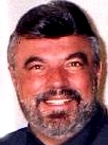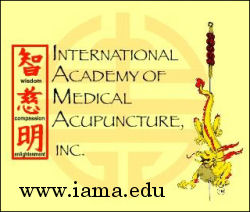Acupuncture & TCM Articles

Acupuncture Articles
by John A. Amaro L.Ac., Dipl.Ac.(NCCAOM), DC
 Dr. Amaro is an internationally known author, lecturer and practitioner beginning his practice of Acupuncture and Chiropractic in 1971. He has led 13 diplomatic Acupuncture study tours of The People's Republic of China escorting more than 500 doctors and practitioners. He has personally studied Acupuncture in nine separate Asian nations. Dr. Amaro is an internationally known author, lecturer and practitioner beginning his practice of Acupuncture and Chiropractic in 1971. He has led 13 diplomatic Acupuncture study tours of The People's Republic of China escorting more than 500 doctors and practitioners. He has personally studied Acupuncture in nine separate Asian nations.
He has received Certification in Acupuncture through the Columbia Institute of Chiropractic in 1973. This was one of the first Acupuncture postgraduate education programs for physicians in North America commencing in 1972.
He has been certified by the Waseda Acupuncture College in Tokyo, Japan in 1974 and graduated from the Chinese Medical Institute, Kowloon, China in 1976. He had previously taken postgraduate studies at the Tai Chung Medical School Taipei, China 1973.
The Korean "Four Point" System
John A. Amaro L.Ac., Dipl.Ac.(NCCAOM), DC
In my last article "Acupuncture Diagnosis in a Chiropractic/Medical Practice" (Dynamic Chiropractic - October 18, 1999), I discussed the high technology acupuncture examination known as "Ryodoraku" or "Electro Meridian imaging" to determine the status of the meridian system.
Since pulse diagnosis as classically taught, only allows the practitioner to see a maximum of 6 to 8 patients a day, many practitioners of Traditional Chinese Medicine (TCM) have begun to use modern diagnostic procedures along with classical acupuncture stimulation techniques.
Of course one of the most important issues in clinical acupuncture is without question the establishing of a proper diagnosis. This includes determining which of the 12 meridians are involved by either being too high in electro magnetic energy, too low or split between left and right sides of the body.
Once the status of the meridians are determined by Electro Meridian Imaging (Ryodoraku) or by Traditional Chinese pulse diagnosis, it is imperative to balance the meridians to normalcy by toniflying the low meridians and sedating the high ones. In Five Element acupuncture, balancing between involved meridians is classical and focuses on borrowing excessive energy to supply those meridians that are too low.
Acupuncture has numerous approaches around the world to include virtually every Asian nation. However, the Koreans approximately 600 years ago, developed one of the most significant techniques of balancing the meridians which is virtually unknown to most acupuncturists except those in Korea and extreme northern China. The procedure is also very well known in the northern islands of Japan.
The technique requires the use of four specific acupuncture points for each meridian that is shown to be either too high or too low. Whereas in Chinese acupuncture, the utilization of the single "tonification" or "sedation" point is all that is classically used.
Even though simple tonification and sedation will suffice in most cases, for those stubborn conditions that are having great difficulty in establishing a balance, this Korean system is ideal. This technique will balance meridians when other procedures will not.
The four steps for a "deficient" meridian are:
1. Tonify the Horary point of the Mother organ
2. Tonify the Mother organs element point on the affected organ
3. Sedate the Horary point of the controlling meridian (KO cycle)
4. Sedate the controlling organs element point on the affected organ
The four steps for an "excessive" meridian are:
1. Tonify the Horary point of the controlling organ (KO cycle)
2. Tonify the controlling organs element point on the affected organ
3. Sedate the Horary point on the "son" organ
4. Sedate the son organs element point on the affected organ
The fact of the matter is, once a meridian is determined to be too high or too low, rather than going through the procedure of figuring out which points to use, the points are always the same for each meridian either being too high or too low. Follow the provided chart to achieve some of the most spectacular clinical results you will ever experience.
Try balancing the involved meridians you have discovered with EMI evaluation with this ancient Korean approach. It has few equals. I personally use it in the most difficult cases.
| 